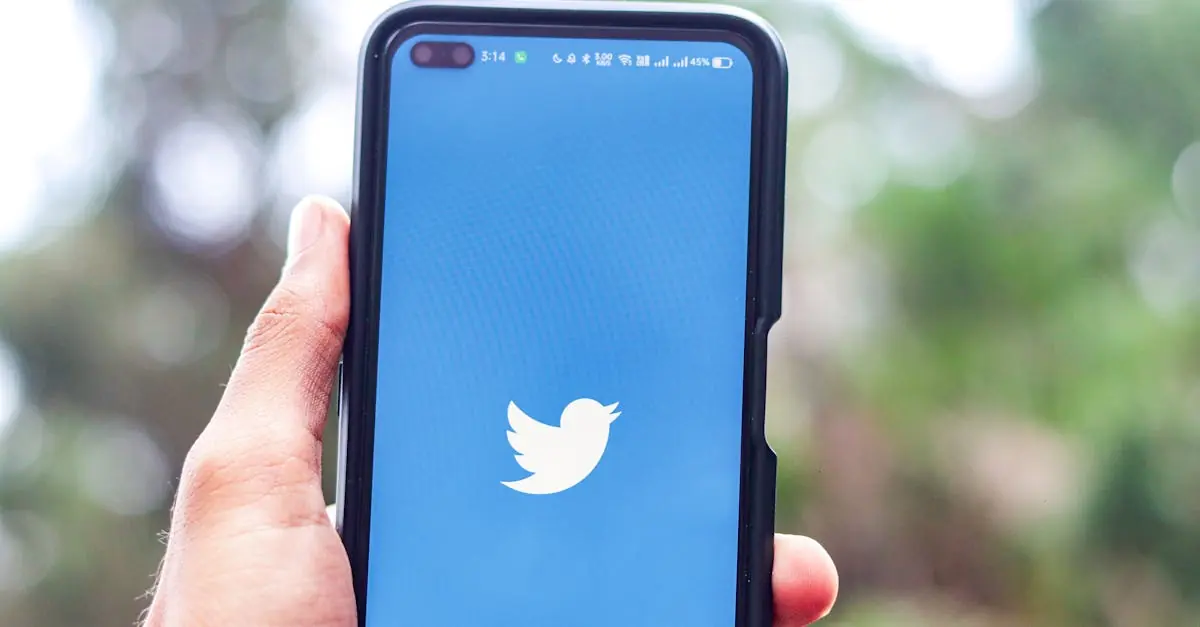In a world where sharing is caring, why should your iPhone screen be left out of the fun? Whether it’s showing off the latest cat meme to a friend or guiding someone through a tricky app, screen sharing on an iPhone can turn a simple conversation into a tech-savvy collaboration. Imagine the joy of saying, “Look at this!” without the awkwardness of passing your phone around like a hot potato.
Getting started with screen sharing is easier than finding a good Wi-Fi signal. With just a few taps, you can unlock the magic of sharing your screen, making it a breeze to connect with others. So grab your iPhone and get ready to impress your friends with your newfound skills—who knew tech could be this much fun?
Table of Contents
ToggleUnderstanding Screen Sharing
Screen sharing on an iPhone serves as a powerful tool for enhancing communication. Users can share their screens in real time, allowing for a more collaborative experience during video calls or messaging. Friends can view content together, facilitating discussions about apps, games, or any visual material.
Utilizing this feature simplifies communication. Instead of trying to describe an issue or showcase a new app, users share their screens directly. This demonstration provides clarity and enriches interactions.
Multiple apps support screen sharing on an iPhone, including FaceTime and Zoom. Each application may offer distinct functionalities, catering to different needs. For example, FaceTime allows for easy access to contacts, while Zoom provides features for larger group meetings.
Advanced features enhance the screen sharing experience further. Users can annotate shared screens during collaborative sessions, adding notes or highlights that help convey information visually. This visual reinforcement makes conversations more engaging and effective.
Security remains a crucial aspect of screen sharing. Users control what’s visible, ensuring only the desired content is shared. Privacy settings safeguard personal information, offering peace of mind while demonstrating apps or sharing sensitive data.
Screen sharing transforms interactions, making them more dynamic. It fosters a sense of presence, even when users are miles apart. The ability to share screens turns simple conversations into interactive experiences.
Preparing Your iPhone
Preparing your iPhone for screen sharing requires a few simple steps. First, ensure your device meets compatibility requirements for various apps.
Checking Compatibility
Check the model of your iPhone. Compatible models include iPhone 8 and later, as earlier models may not support certain features. Confirm the application you plan to use, as not all apps offer screen sharing. Apps like FaceTime and Zoom have diverse compatibility. Review the app’s official website for specific information that addresses device compatibility.
Updating Your iOS
Make sure your iOS is current. Navigate to Settings, tap General, and select Software Update. An updated operating system enhances functionality and security during screen sharing. Download and install any available updates to guarantee optimal performance. Staying current with iOS versions often improves app compatibility, enabling seamless screen sharing experiences. Regular updates also address bugs that can hinder the screen sharing process.
Using Built-In Screen Sharing Features
Screen sharing on an iPhone can occur through several built-in features, enhancing communication and collaboration during calls.
Screen Sharing via FaceTime
FaceTime enables seamless screen sharing during video calls. Users can initiate a FaceTime call, then swipe up from the bottom of the screen to access the Control Center. Tapping the screen sharing icon allows for sharing the entire screen or specific apps. Participants at the other end can view everything shared, from photos to apps. Ensure that both users are using compatible iPhone models for the best experience. The built-in privacy features let users stop sharing at any time, maintaining control over their content.
Screen Sharing with Zoom
Zoom provides an intuitive screen sharing option for meetings and get-togethers. Users need to join or start a meeting on the Zoom app. Tapping “Share Content” brings up the option to select which screen or app to share. Interactive elements in Zoom let users annotate shared content in real-time, facilitating discussions effectively. Adjusting settings for sharing allows users to manage privacy and ensure only the intended content is visible. Zoom’s user-friendly interface enhances collaboration, making it easy to connect with friends or colleagues from anywhere.
Third-Party Apps for Screen Sharing
Numerous third-party apps enhance the screen sharing experience on iPhones, offering unique features and flexibility. These applications often facilitate effective communication for users seeking alternatives to built-in options.
Popular Apps to Consider
Many users opt for apps like TeamViewer, which enables remote control and file sharing. Another popular choice is Microsoft Teams, allowing users to collaborate seamlessly during meetings. Slack also integrates screen sharing, benefiting teams with real-time discussions. Google Meet supports high-quality video calls and easy screen sharing, making it ideal for work and social gatherings. Each of these apps provides specific functionalities to cater to various needs, making them invaluable tools for effective communication.
Setting Up Third-Party Apps
To start using third-party apps, the first step is downloading the chosen app from the App Store. After installation, users must open the app and sign in or create an account, depending on the service. Next, specific permissions for screen sharing must be granted within the app settings. Users then initiate a video call or meeting, where they can access the screen sharing feature seamlessly. Ensuring compatibility with the iPhone model and version helps prevent any functionality issues during use. Following these steps guarantees a smooth experience when sharing screens with others.
Tips for Effective Screen Sharing
Effective screen sharing enhances communication and collaboration. Following a few tips can ensure a seamless experience.
Ensuring a Smooth Experience
To enhance screen sharing, users should close unnecessary apps before starting. Keeping the device free from distractions improves performance during sharing sessions. Good internet connections matter; a stable Wi-Fi connection enhances quality. Regularly restarting the iPhone can clear temporary files, optimizing speed and functionality. Checking for app updates before sharing also boosts compatibility with others. Users should remind participants to update their apps too, ensuring everyone benefits from the latest features.
Privacy Considerations
Maintaining privacy during screen sharing is crucial. Users can minimize risk by ensuring sensitive information is hidden before sharing. Enabling privacy controls helps manage what others see. Specific features in apps like FaceTime and Zoom allow users to select which content to share. Users should regularly review app permissions to make sure they align with privacy needs. Signaling participants about exhibited content is essential, especially when sharing sensitive materials. These practices promote confidence and comfort during screen sharing sessions.
Embracing screen sharing on an iPhone opens up a world of interactive communication. Users can easily connect and collaborate with friends or colleagues, making conversations more engaging. With options like FaceTime and Zoom, along with various third-party apps, the possibilities are endless.
By following simple steps to ensure compatibility and keeping devices updated, screen sharing becomes a seamless experience. Prioritizing privacy and managing what’s visible enhances comfort during sessions. Overall, screen sharing transforms how users interact, bridging distances and fostering a sense of togetherness.



